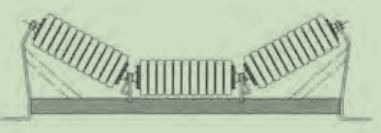 Afrikaans
Afrikaans  Albanian
Albanian  Amharic
Amharic  Arabic
Arabic  Armenian
Armenian  Azerbaijani
Azerbaijani  Basque
Basque  Belarusian
Belarusian  Bengali
Bengali  Bosnian
Bosnian  Bulgarian
Bulgarian  Catalan
Catalan  Cebuano
Cebuano  Corsican
Corsican  Croatian
Croatian  Czech
Czech  Danish
Danish  Dutch
Dutch  English
English  Esperanto
Esperanto  Estonian
Estonian  Finnish
Finnish  French
French  Frisian
Frisian  Galician
Galician  Georgian
Georgian  German
German  Greek
Greek  Gujarati
Gujarati  Haitian Creole
Haitian Creole  hausa
hausa  hawaiian
hawaiian  Hebrew
Hebrew  Hindi
Hindi  Miao
Miao  Hungarian
Hungarian  Icelandic
Icelandic  igbo
igbo  Indonesian
Indonesian  irish
irish  Italian
Italian  Japanese
Japanese  Javanese
Javanese  Kannada
Kannada  kazakh
kazakh  Khmer
Khmer  Rwandese
Rwandese  Korean
Korean  Kurdish
Kurdish  Kyrgyz
Kyrgyz  Lao
Lao  Latin
Latin  Latvian
Latvian  Lithuanian
Lithuanian  Luxembourgish
Luxembourgish  Macedonian
Macedonian  Malgashi
Malgashi  Malay
Malay  Malayalam
Malayalam  Maltese
Maltese  Maori
Maori  Marathi
Marathi  Mongolian
Mongolian  Myanmar
Myanmar  Nepali
Nepali  Norwegian
Norwegian  Norwegian
Norwegian  Occitan
Occitan  Pashto
Pashto  Persian
Persian  Polish
Polish  Portuguese
Portuguese  Punjabi
Punjabi  Romanian
Romanian  Russian
Russian  Samoan
Samoan  Scottish Gaelic
Scottish Gaelic  Serbian
Serbian  Sesotho
Sesotho  Shona
Shona  Sindhi
Sindhi  Sinhala
Sinhala  Slovak
Slovak  Slovenian
Slovenian  Somali
Somali  Spanish
Spanish  Sundanese
Sundanese  Swahili
Swahili  Swedish
Swedish  Tagalog
Tagalog  Tajik
Tajik  Tamil
Tamil  Tatar
Tatar  Telugu
Telugu  Thai
Thai  Turkish
Turkish  Turkmen
Turkmen  Ukrainian
Ukrainian  Urdu
Urdu  Uighur
Uighur  Uzbek
Uzbek  Vietnamese
Vietnamese  Welsh
Welsh  Bantu
Bantu  Yiddish
Yiddish  Yoruba
Yoruba  Zulu
Zulu Understanding the Function and Importance of V-Belt Idler Pulleys in Machinery Performance
Understanding V-Belt Idler Pulleys Importance and Applications
V-belt idler pulleys are crucial components in various mechanical systems, especially in automotive and industrial applications. These pulleys serve as a tensioning device that helps maintain the right amount of tension in the V-belts, ensuring smooth operation and extending the service life of the belts. This article delves into the construction, functionality, and significance of V-belt idler pulleys.
Construction of V-Belt Idler Pulleys
V-belt idler pulleys are typically made from durable materials such as steel or high-quality polymers, which offer strength and resilience against wear and environmental factors. These pulleys are designed with a grooved surface that perfectly accommodates V-belts. The idler pulley can be either fixed or adjustable, allowing for flexibility in maintaining the belt tension.
The design often includes bearings, which enable the pulley to rotate smoothly and reduce friction as the belts engage with it. Proper design and material selection are critical, as they directly influence the durability and efficiency of the idler pulleys.
Functionality and Working Principle
The primary function of an idler pulley is to guide the V-belt around a specific path and contribute to the tensioning of the belt system. When a V-belt is installed in a mechanical system—such as in automotive engines or conveyor systems—proper tension is essential. Too much tension can lead to excessive wear and tear on both the belt and the pulleys, while too little tension may cause slippage and inefficient power transfer.
The idler pulley can take up slack in the belt, allowing the belt to operate within its optimal tension range. By applying appropriate tension, the idler pulley helps maintain efficient power transmission from one component of the machine to another, improving the overall performance of the system.
v belt idler pulley

Importance in Automotive Applications
In automotive applications, V-belt idler pulleys are vital for the proper functioning of the engine’s accessory drive system. They help facilitate the movement of belts connected to various components, such as the alternator, water pump, and power steering pump. A malfunctioning idler pulley can lead to belt slippage or misalignment, resulting in loss of power to these essential components and potentially leading to engine failure.
Regular inspections of the idler pulleys and V-belts are crucial for ensuring vehicle reliability. Signs of wear, such as cracking or fraying of the belt, or noise from the pulley, may indicate that maintenance or replacement is necessary. Proactive measures can save vehicle owners from costly repairs and ensure optimal vehicle performance.
Applications in Industrial Settings
Beyond automotive use, V-belt idler pulleys find applications in various industrial settings, such as manufacturing and material handling. Conveyor systems utilize these pulleys to maintain the correct tension in belts that transport goods. The efficiency of these systems relies significantly on the proper operation of idler pulleys, as any misalignment or improper tension can disrupt the workflow and lead to operational downtime.
Conclusion
In summary, V-belt idler pulleys are essential in maintaining the efficiency and longevity of V-belt systems across a range of applications. By providing proper tension and guiding the belt, these pulleys play a significant role in ensuring smooth operation, whether in vehicles or industrial machinery. Regular maintenance and timely replacement of worn or damaged idler pulleys can prevent system failures, enhance performance, and promote the longevity of the entire mechanical setup. Understanding the significance of these components is vital for anyone involved in mechanical engineering, automotive repair, or industrial operations.
-
Revolutionizing Conveyor Reliability with Advanced Rubber Lagging PulleysNewsJul.22,2025
-
Powering Precision and Durability with Expert Manufacturers of Conveyor ComponentsNewsJul.22,2025
-
Optimizing Conveyor Systems with Advanced Conveyor AccessoriesNewsJul.22,2025
-
Maximize Conveyor Efficiency with Quality Conveyor Idler PulleysNewsJul.22,2025
-
Future-Proof Your Conveyor System with High-Performance Polyurethane RollerNewsJul.22,2025
-
Driving Efficiency Forward with Quality Idlers and RollersNewsJul.22,2025





























